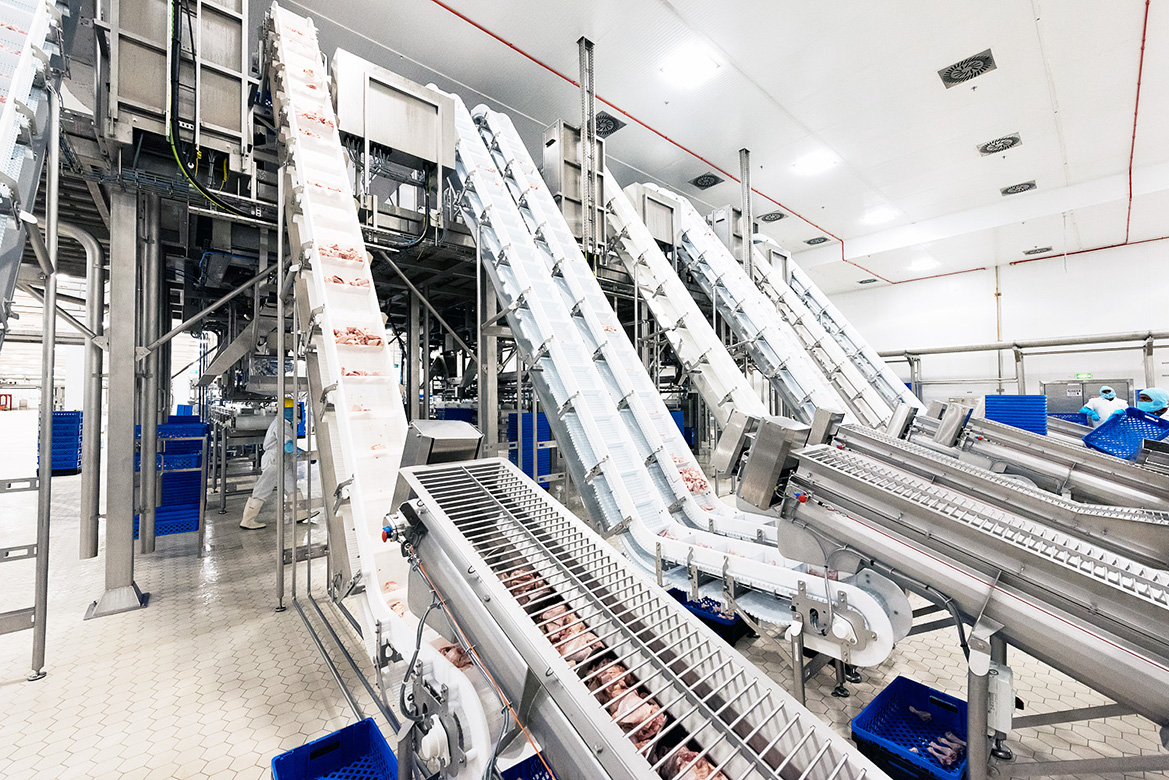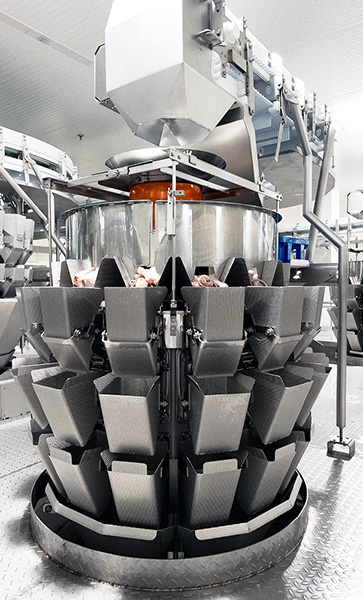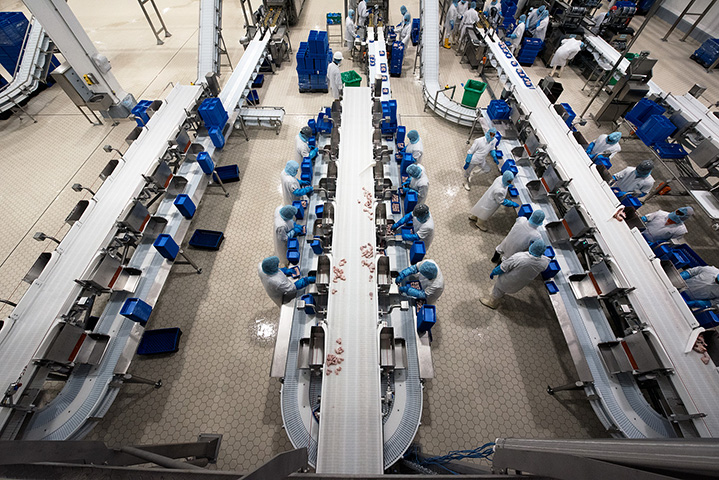
Case Study: Almaria
Almarai’s launch in 2009 of Alyoum, its brand of premium chicken products, involved the purchase of a factory and farming site in Ha’il Province, where the company first came into contact with Ishida. Almarai is confident that its new 37,500 bird-per-hour plant, built as a turnkey project, can more than keep pace both with growing demand and with changing consumer preferences.
What began as a 21,000 bph (birds per hour) project, escalated over a 3-year period in three phases to become a 37,000 bph facility.
Little or nothing of the chicken is wasted.
The new factory, with its 200 million birds per year capacity, is now one of the largest single output poultry plants in the world.
Whole birds are, and will continue to be, an important part of the market. However, consumer demand is driving development more in the direction of fixed weight packs of, for example, breast fillets, drumsticks, thighs, legs or wings, or combinations of different pieces. Almarai’s objective was to be able to satisfy such demand with fully sealed, fixed-weight products meeting the highest standards of hygiene and presentation.



The level of integration is exceptional, as one might expect when a single organisation is in charge of supply and installation. Live bird handling, slaughter, evisceration, chilling, cut-up, deboning, batching and grading, weighing, piece mixing, packing, labelling and crating are all linked by, and contribute to, information exchange that enhances quality, efficiency and speed.
Once plucked, eviscerated and chilled, chickens can be sent for grading and packing as whole birds or delivered to one of the plant’s three cut-up systems. For the whole birds, there are separate lines for packing into bags and trays. Special fillet lines pack chicken breasts that have been removed with the greatest precision and then X-ray inspected for bone fragments. There are also separate packing lines for thighs, legs, wings and drumsticks. Little or nothing of the chicken is wasted, with lines also for giblets and for feet.
Other lines are devoted to producing mixtures of chicken pieces, such as drums, chops and wings, according to availability or market demand.
*Please note the above video is used for demonstration purposes and not the actual product within this case study.
Most of these items can be delivered into fixed-weight trays or bags of high hygiene and appearance standards and as fresh or IQF (individually quick frozen) products. In addition, threaded through the plant are systems capable of collecting any of these parts for bulk packing.
Ishida provided automation of the weighing and packing processes to the same advanced level. “The main benefit here, apart from the speed needed to keep up with the cut-up lines, was the reduction of giveaway to low levels. We see the new Ha’il plant as equipping us to meet demand into the future and also enabling us to serve the market’s movement towards poultry pieces sold in fixed weight packs”.
“Ishida provided us with a strong team of professionals to drive the installation,” recalls Mr Asgeirsson. “They were well prepared and extremely professional.” “The Ishida lines have now been operating for two years, and I find them robust and reliable: we have had minimal downtime”.
Mr Asgeirsson also praised the dedication of the Ha’il workers, whose dedication and readiness to learn enabled them to adapt to the change from a 30-year old factory to possibly the most modern poultry processing plant anywhere today.